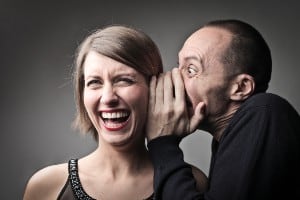Tons of Hilarious Jokes
For Joke Lovers Everywhere!

Everything You Need To Know About Jokes
Political correctness, crude humor, and being offensive may have taken over the ‘jokes' industry in recent years but human beings have been laughing over jokes for thousands of years. In fact, later in this article, we'll prove that people continue to laugh over jokes today that was funny centuries ago.
In some manner, funny is funny, and so what was relevant centuries ago, like crude fart jokes, many people will continue to find funny today.
But the question many people ask is how did it all start? When did people start telling jokes, and why? The answer to this is harder than most people realize because we have been laughing ever since humans existed. We may have started joking about nature, animals and each other, which then evolved over time.
How exactly this started is anyone's guess. Sure, there are stone tablets with ancient jokes inscribed on them, but are they the oldest jokes we know of?
In this article, we'll explore the culture, history and other aspects of telling a good joke. We'll also try to examine why telling a good joke continues to be an art and skill which can be developed by creative individuals.
What Is A Joke?

A joke is a thing that someone says to cause amusement or laughter, especially a story with a funny punchline.
Quite literally, a joke is a display of being funny or humorous, using words and a specific narrative that makes people laugh, hopefully uncontrollably. Jokes are meant to be taken lightly and in the moment, this means they shouldn't be taken seriously..
Many standup comedians will start by telling a story, often there is dialogue, which ends with a punch line. The punch line is when the audience is hit by the fact that this joke or story has a second, often conflicting meaning. Sometimes this is done using puns aka play on words like sarcasm or irony, nonsense, incompatibility or various other means.
Most jokes are short and humorous skits told orally, with the funniness or the funniest part being at the end. It is often a single-sentence punchline. Many modern-day comedians will create tension during their storytelling part until it reaches the end.
While many jokes are oral, there are also jokes that are printed, but there is often no obligation to reproduce the text from the jokes verbatim. That's why there are so many variations of popular jokes.
According to experts, jokes have always benefitted from brevity; they don't contain more detail than what is needed to build tension heading to the punchline. However, riddle jokes or one-liners as they are called, work slightly differently, which leaves only the dialogue and punch line that's verbalized. That said, sometimes breaking these rules can lead to triggered humor.
It is worth emphasizing that jokes are a known form of humor but not all humor is a joke. There are non-verbal humor or jokes, like situational humor, slapstick, involuntary humor, anecdotes, and practical jokes.
Jokes are identified as being the simplest form of humor and oral literature, which have been passed on anonymously through the ages, according to well-known Dutch linguist Andre Jolles. Jokes happen to be both private and they can be told at a public event. These jokes can be a single person telling one to a friend with a natural conversational flow.
However, often they can be a barrage of jokes that are told as part of a story or scripted entertainment. The jokes are passed through in the form of scripts and books. As of late, the internet has become the largest repository of jokes and small businesses have been set up around the joke industry.
Experienced stand-up comics are often those who tell jokes to a large crowd. These comedians will use perfect timing and slapstick to lay out their jokes, making them funny. Some comedians may use voice impressions to add a little extra "funny" to their jokes. In other words, they understand the art of turning an otherwise mundane story or event into a funny one.
What's The History of Jokes?

Most if not all jokes documented in the past have mainly happened by mistake and not by design. In other words, our ancestors were not taking the time out to document jokes of the time. If anything, jokes are still not a part of what is considered refined culture, but in modern times we are doing a better job of documenting them.
While it was always part of leisure and entertainment regardless of class, today, people who tell jokes professionally are respected.
Any documents with jokes were considered temporary documents, which were created to be thrown away later. However, many of the earliest documented jokes deal with sexual topics and scatological ideas, which would appeal to people of all classes but are not necessarily seen as being of value or worth saving.
Over the years, we've been able to identify various ancient pre-classical jokes in text. The oldest ones we've discovered so far are ancient Sumerian, modern-day Iraq, dating back to 1900 BC, and it contains toilet humor. Some of the jokes historians have unearthed date back to the old Babylonian period, with others going further back to 2300 BC.
In fact, the second oldest joke was discovered on a Westcar Papyrus and is about Sneferu, and dates back to 1600 BC in Ancient Egypt.
Then there is the tale of three ox drivers from Adab, which is considered the third oldest joke in the world. It is mainly a comic triple that dates back to 1200 BC Adab. It has three men attempting to seek justice from the local king regarding who is the owner of a newborn calf, both parties think they played a role in it being born. When they go to the king, the king seeks advice from the priestess nearby on how best to rule the case, but she suggests a series of events involving both parties' wives and their households. Unfortunately, the punch line has not survived. But there is some evidence that it was bawdy.
Translating jokes has always been a problem throughout history. The fact is that the puns and punch lines don't often carry over as well, which can ruin the impact of a translated joke.
The problem is that jokes, at least some of them, depend on a particular word and not specifically their meaning. Take the joke of Julius Caesar selling land for a super low price to his lover Servilia, whom many knew as being a prostitute and would prostitute her daughter Tertia, to the emperor to secure his favor. The punchline of the joke is "conparavit Servilia hunc fundum tertia deducta." Which when translated into English is "with one-third off (in price)", or "with Tertia putting out", now that isn't all that funny.
What's The Earliest Known Joke Book?

The earliest joke book published was called the Philogelos, which when translated means Laughter Lover, and is a collection of a whopping 265 jokes, all in crude ancient Greek. The jokes date back to the fifth century AD. Unfortunately, not much is known about the author, and there are a few others that contributed to it, including Hierokles.
The book according to British classicist Mary Beard, the book was intended to be a handbook for jokesters, with stuff they could memorize and say on the fly, rather than something that needed to be read through cover to cover.
A surprising discovery made was that many of the jokes in the collection were familiar, even though the protagonists are far less recognizable to readers, for instance, the eunuch, absent-minded professor, and people with bad breath.
It was during the 15th century, with the evolution of printing technology spreading across Europe, more people started to publish joke books. It was coupled with an increase in literacy rates across all social classes.
The new printers would start churning out Jestbooks along with a steady stream of new testaments meeting the interests of the local populace. One such early anthology of jokes was by Poggio Bracciolini, called Facetiae, which was published in 1470. The popularity of this jest book was such that it ended up with twenty editions across the 15th century.
The other popular type of book was a collection of jests, funny situations and jokes which were attributed to one character in a narrative form. The rising popularity of these jestbooks can be attributed to the rise in literacy rates in Europe and the quest for more leisure activities, especially through the Renaissance period.
Later printers would use jokes and cartoons as fillers in between pages of chapbooks and broadsides through the 19th century. If anything, joke books became the most common type of printed books throughout the 16th, 17th, 18th and 19th centuries in Europe and then North America.
Jokes were printed alongside the news of executions, ballads and various other events. One of these has been archived in the Harvard library and described as Grinning Made Easy; in 1706, then there is also Funny Dick's unrivalled collection. These publications were intended for mass distribution and were to be read alone or aloud, after which they would be discarded.
How Do You Tell A Joke?

Telling jokes happens to be a cooperative effort, requiring the teller and audience sign an unsaid agreement in the way of understanding the narrative of the joke. Conversation analysis by Harvey Sacks, a celebrated sociologist, describes the sequential organization in detail, outlining how telling a joke works.
The joke is often composed as a story of three ordered and closely located sequences. You've got the preface or framing of the joke, then there is the telling of the joke and then there is the response.
It also includes the context of the joke. This means understanding who is telling a joke and to whom, in addition to why they are telling it. The context of the joke telling leads us to the study of joking, a term coined by anthropologists that mainly refer to the social groups within the culture engaging in organized banter and joking.
Framing The Joke
You probably have heard a joke start with "have you heard…" Framing is often done with a frequently formulaic expression that has proven to key the audience into what will happen next or what they can expect. Other similar framings are "so a lawyer, doctor and eye specialist...", and "this reminds me of...". The frame helps to create a social space with clear boundaries which are centered around a narrative.
The audience will respond to the initial framing, and then they will anticipate how the joke follows. Sometimes it can be a dismissal with a statement like, "this is not something to laugh about."
A big part of framing a joke is down to performance since this will vary depending on the cultural norms of the situation. This means that the audience and the person telling the joke will be of the same location, time, and culture for it to make sense and for the performance to be funny.
Telling The Joke
The framing of the joke does not have to be verbatim, similar to other oral traditions like myths. The teller will often modify the joke to suit their audience and will draw upon their memory of the situation. However, the narrative needs to be succinct, it needs to have details leading to an understanding and decoding of the final punchline. It should follow a similar divergent script, which is then embedded into the punchline.
The narrative will always have a protagonist who is the butt of the joke or the target. Many times, it is the person telling the joke; other times, it may be someone else. The labelling has led to the development of stereotypes within certain cultures. However, this stereotyping has helped researchers to analyze the creation and interpretation of joke cycles that circle around characters.
The Punchline
The punchline is the final part of the joke and is meant to trigger laughter. The trigger contained in the punchline is meant to trigger laughter, and that is commonly done by abruptly shifting the audience's understanding of the story from what was initially framed to its interpretation.
In other words, readers can think of the punchline as the pivot on which the initial framing is turned, signaling the shift between the scrips necessary to interpret the joke. However, to trigger humor, it is important that the joke is compatible with the framing or is its opposite.
The Response
The outcome of a joke should be resounding laughter. However, that will only happen if the audience gets it and is thus entertained by it. Many people believe that a joke is, in fact, an understanding test of sorts between groups and individuals.
If the listener or a group of listers do not understand or "get" the joke, they are unable to make a connection between the first and last half of the script. Sometimes the audience may not laugh because the joke is either too obscene or hurts their sentiments. Also, audiences will not laugh at an otherwise dumb joke.
Men and women also respond slightly differently to jokes. For instance, a woman will respond differently to a joke told by a man than she would to by another woman. Also, who the audience is matters. For instance, toilet humor may trigger laughter at an elementary school and not on a college campus.
So, different responses for different people even if the punchline is essentially the same.
Delay The Funny
When you have a funny idea or joke, you may feel tempted to bounce it off, someone. However, the best ones are usually at the end. You will want to (as talked about earlier in this article) put the funny part at the end of the sentence.
For instance, if you have a donkey that's part of the twist in your story or joke, don't start with there was a donkey, instead say, there was once a unique animal. That way, you're creating suspense until the very end, and that's when the audience is laughing and not you. Taking this approach will also require awesome timing.
One of the easiest ways to delay the funny is with callbacks. These callbacks work by bringing together that sort of stitches the story together. As the term suggests, you go back and will reference the items that got a laugh or maybe create a mention of an item from the previous conversation.
This can be anything from any one of your jokes that may have worked or something funny or memorable that someone else might have said. However, you don't have to always tell a fresh joke to remain funny.
What Are Simple Rules For Creating Really Funny Jokes?

The funniest jokes are ones that are stories, and it was something that took off back in the 1960s. This type of humor is referred to as observational humor and tends to do a pretty good job of making people laugh. The classic example of observational humor is Larry David and Jerry Seinfeld, whose experience as stand-up comedians also led to the creation of two award-winning shows.
Their jokes rely on personal experiences, using them as fodder. The reason they work is that every experience is unique, which is why their stories are guaranteed original.
The best and easiest way for anyone to be funny is to highlight actual things that happened to them and situations that were awkward and funny as a result. This is far easier than trying to write jokes and come up with them. Usually, funny people keep track of everything they think is funny and then practice sharing it with everyone they know.
Back in the day, comedians would carry notebooks and then jolt down what they found funny. Many of these books have survived to this day, with variations of those jokes still being told.
Today, you can take notes on your phone. If you have a thought, that's funny, simply record it. Make an audio note of it. If you read a funny article, then save the link. Think of it this way, the world around you is a funny place and you within it is even funnier. Once you accept that fact, it will give you just about everything needed to be funnier. All you need is to document your stories.
A Final Word About Jokes And Joking
When you are getting into writing your own jokes or maybe starting out as a standup comedian, it is important to change your mindset. These people often have a very different mindset and that means they see things differently.
What many may feel offended by, a comedian may see as fodder for a new joke. For instance, having to push a broken-down vehicle to the nearest gas station when there is no cell reception may sound like a nightmare. But a comedian or someone who writes jokes will take inspiration from it, turning this otherwise nightmare situation into a funny one.
Finally, it's important to stress that practice makes a great deal of difference. All the top comedians and stand-up comics have one thing in common, they practice for hours each day. So, unlike what the audience may think, this does not come naturally to them. The more you practice, the jokes, stories and timings, the funnier you will sound and be.
That said, you might want to start small with a couple of written jokes, maybe a few casual stories and bounce a few ideas off your audience. You might also want to sign up for an improv class or offer to maybe write a wedding toast. This should give you a platform on which you can build your reputation and hopefully start booking gigs moving forward.
Being funny is an art but it also takes a great deal of hard work to practice your lines. Not many people at the top of the industry were born funny, but they and found what worked for them. That said by applying the strategies above coupled with a few others, you can become a funnier person overall. The important thing is to take the time to practice and find new fodder.

Funny Jokes Of The Day
- Things Never Said by Southerners ‐ -- Duct tape won't …
- What's OJ Got? ‐ What does OJ have that every man …
- What They Say at Your Funeral ‐ Three friends die in a car accident …
- Satisfaction ‐ There was an older man who'd married …
- Blondes and Ice Cubes ‐ Q: Why can't blondes make ice cubes? …
- The roof is on fire ‐ Q: What's dumber than a brunette …
- Bill and Hillary ‐ Bill Clinton and Senator Hillary …
- Miracle Exercise ‐ There was a woman who had very …
- Easter Blondies ‐ Three blondes died and found themselves …
- America has finally captured Saddam ... ‐ America has finally captured Saddam …
- Yo' Mama Is So Redneck... Mobile Home ‐ Yo' Mama so redneck, she thought …
- Medieval Booty Call... Grail ‐ I'm searching for the Holy Grail. …
- The Fish-Eating Competition ‐ One day some fisherman caught tons …
- Donkey-Onion Hybrid ‐ Q: What do you get when you cross …
- Raggedy Ann and Pinnochio ‐ Q: Why was Raggedy Ann kicked out …
- Yo' Mama Is So Stupid... Peephole ‐ Yo' Mama is so stupid, she has …
- Air Head on a Beer ‐ Why did the blonde take a ladder …
- Monica at the Dry Cleaners ‐ Monica walks …
- Classic Booty Call... New ‐ I'm new around here. Can I have …
- Walks Into a Bar... Pissing Contest ‐ Two men walk into a bar, one wearing …